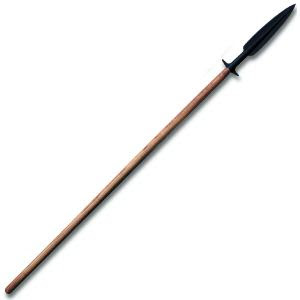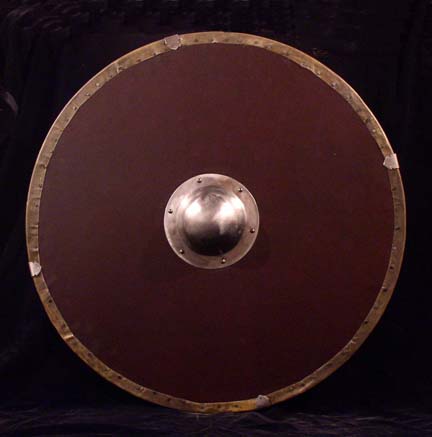|
Life in Anglo-Saxon England Part 4: Laws and FightingLaw Laws sometimes varied depending on which part of the Heptarchy people lived in; King Æthelbert of Kent instituted a set of laws, commonly known as the Law of Æthelbert, that, some sources say, is the oldest surviving example of Old English. In 688, King Ine of Wessex established a set of codes that have been called one of the first sets of comprehensive laws in Anglo-Saxon England. Weapons and fighting
Anglo-Saxon blacksmiths made plenty of metal weapons and armor and helmets and shields. Thanes who could afford it wore chain mail. Helmets were usually made of metal, usually iron, and so many warriors couldn't afford such protection. They could, however, afford (often because they made it themselves) a wooden shield. Much has been written about the vaunted Saxon Shield Wall, a battle tactic that employed warriors standing in close quarters with their shields overlapping, opening only a fraction to allow the head of a spear to peek through (a tactic not unlike the phalanx of Ancient Greece, which Alexander the Great employed to conquer most of the then-known world). 
Spears, swords, and battleaxes were common weapons at this time. Spears were thrown or used to jab; thrown spears were also called javelins. Far and away the most prevalent weapon found in Anglo-Saxon graves is the spear. Spears were mainly wood and had a metal tip, so spears were relatively inexpensive. Other weapons, made of metal, were more expensive, not only because of the material used to make them but also because of the craftsmanship involved to make a good metal weapon. Warriors also wielded swords and knives and axes; some axes were held and used to hack and slash, others were thrown. Part 5: Religion and Literature |
|

 One of the things that many Anglo-Saxon men did quite a bit is fight. They struggled to gain a foothold in England to start with, and they struggled to keep the land that they took or had been given. They struggled to maintain supremacy over their own tribes or their own lands or their own kingdoms. The Angles, Saxons, and Jutes were very good at fighting, and they had a retinue of weapons that they preferred.
One of the things that many Anglo-Saxon men did quite a bit is fight. They struggled to gain a foothold in England to start with, and they struggled to keep the land that they took or had been given. They struggled to maintain supremacy over their own tribes or their own lands or their own kingdoms. The Angles, Saxons, and Jutes were very good at fighting, and they had a retinue of weapons that they preferred.
